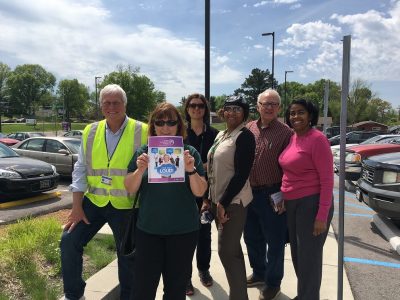Walk Audit



Similar to facilities audits, walk audits are evaluation tools that rate the built environment of the transportation network on ease of access, use and comfort for residents of all ages. The built and social environments of a community greatly impact the livability of that community – particularly for older adults living in the area. To ensure the built environment of our communities facilitate safe mobility, we must assess the current state of our neighborhoods and analyze our streets, intersections, sidewalks, and pedestrian facilities.
Walk audits can be done in any community – all you need are audit tools, clipboards, safety vests and willing participants. As an example, St. Louis County staff from the Departments of Planning, Human Services and Transportation collaborated to plan and host a series of three walkability audits for older adults this year. The County partnered with the St. Louis County Library system and St. Louis OASIS to implement an audit with seniors. St. Louis County staff created an audit tool which provides guidance for auditors looking to assess their built environment. It addresses special considerations specific to older pedestrians such as sensitivity to loud noises and bright lights, cognitive ability and memory, slower walking pace, and susceptibility to steep inclines. The results of walk audits can be valuable to the community planning process and can lead to improved mobility conditions for pedestrians of all ages and abilities.
Here are some great reasons to do a walk audit project:
• Increase exercise opportunities for your residents
• Boost social interaction among neighbors by creating a walking-friendly environment
• Help reduce traffic congestions and pollution by leaving the car at home.
• Increase property values: walkable communities are associated with higher home values!
The audit tool is designed with questions that are straightforward and easy to answer and can be used by municipal staff, officials, or residents. A series of questions were developed for each category with possible answers of either Yes/No. The tool’s benefit is that it provides concrete feedback to improve facilities or public spaces and captures site specific strengths and weaknesses.
Main target group: Older people in general
Sector(s): Housing, Transportation, Urban development
Other sector(s): Access
Desired outcome for older people:
Be mobile